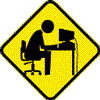The computer is slow to boot to windows and when it finally does, it takes about 10 minutes to load everything. After that, it's kind of slow sometimes. It also will sometimes shutdown with a BSOD. The error is a D1 error which may or may not be related to a Realtek AC97 Audio Driver (ALCXWDM.sys). Additionally, the backup hard drive (D drive) is not showing up in "My Computer" and is not accessible. All the cables appear to be securely attached.
It's unclear at what point in time these problems started. The computer was working perfectly fine until three things occurred:
1) The power supply unit died and the computer was taken to a repair shop for a replacement. The repair shop installed another 1GB of RAM and removed a few programs including the AV software and installed Norton AV. When the computer came back, it kept getting scandisk/chkdsk errors.
2) A few days after this, the owner of the computer moved and the computer was not properly packed. I have no idea what kind of care or abuse it received during the actual move.
3) The computer was only used briefly during the few weeks after the move. After these few weeks, Comcast HSI was hooked up and the Comcast HSI software was installed on the computer. A firewall was installed and running prior to this. This is when the bulk of the problems started (or at least became very noticeable).
I have scanned the computer for malware and used a rootkit scanner. Nothing is showing up and there are no signs of any malware (usually this relative gets their browsers hijacked by a TDSS rootkit).
The computer is custom built. Here are the specs:
Intel Core 2 Duo E6300 Conroe @ 1.86GHz
2 GB DDR2 RAM
Windows XP Home SP3
NVIDIA GeForce 6200
Northbridge - Intel i945P rev. A1
Southbridge - Intel 82801GB (ICH7/R) rev. A1
MSI MS-7236
both hard drives are SATA
I suspect I need to go into the BIOS and change the boot order, but this BIOS is a little confusing. Can someone walk me through it (assuming that's what I need to do)?
What else do I need to do and does the order in which I do them matter?
Edited by little87, 04 November 2010 - 01:32 PM.















 Sign In
Sign In Create Account
Create Account

